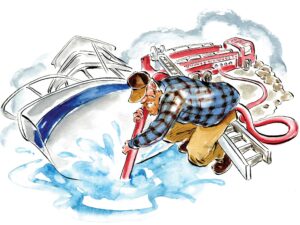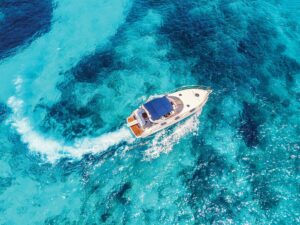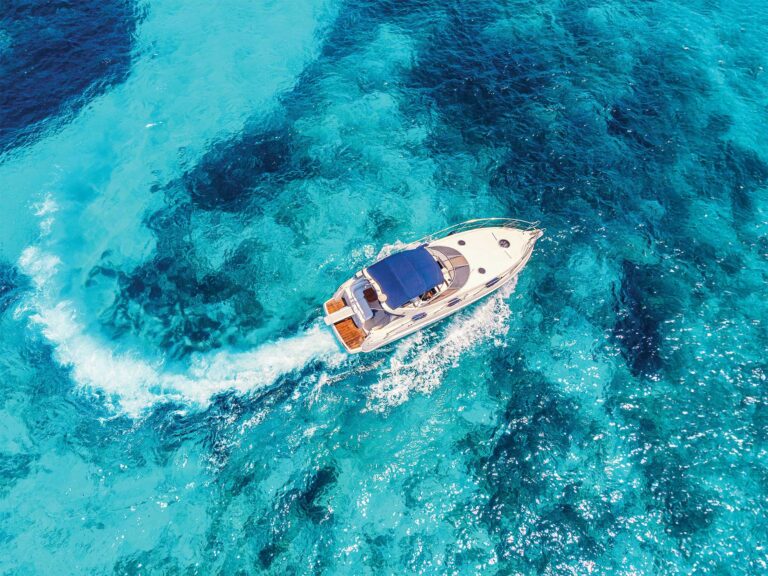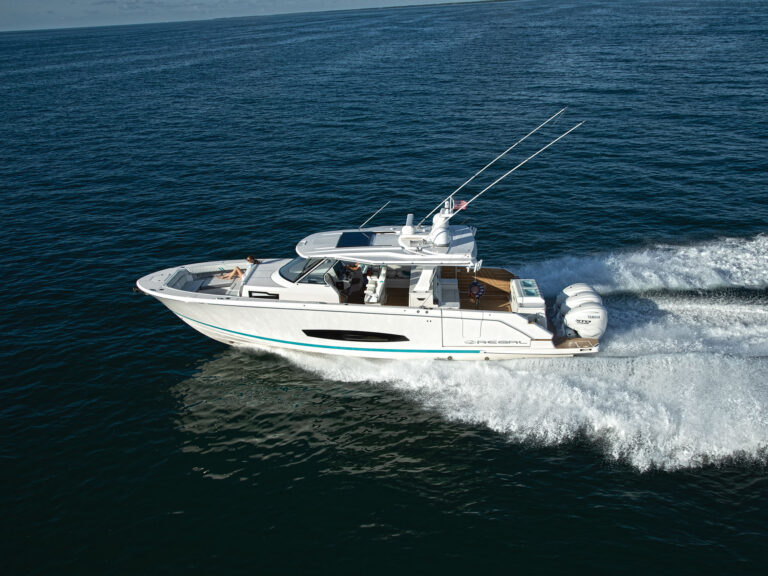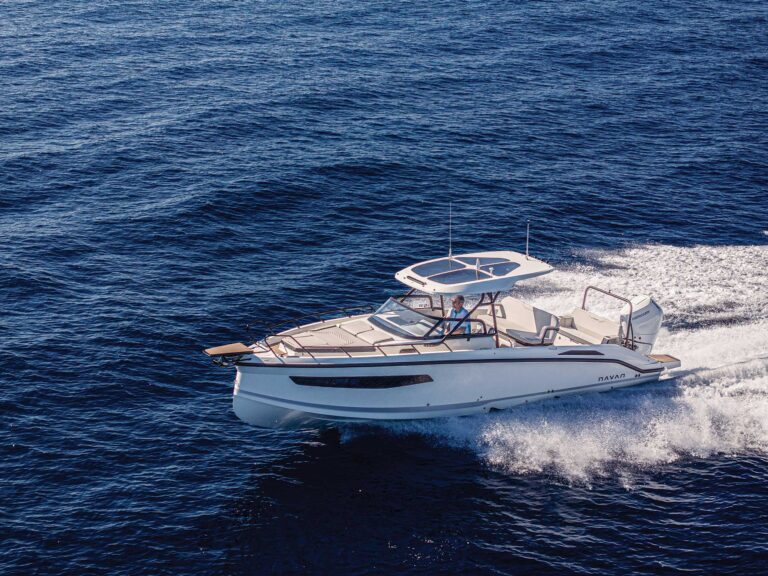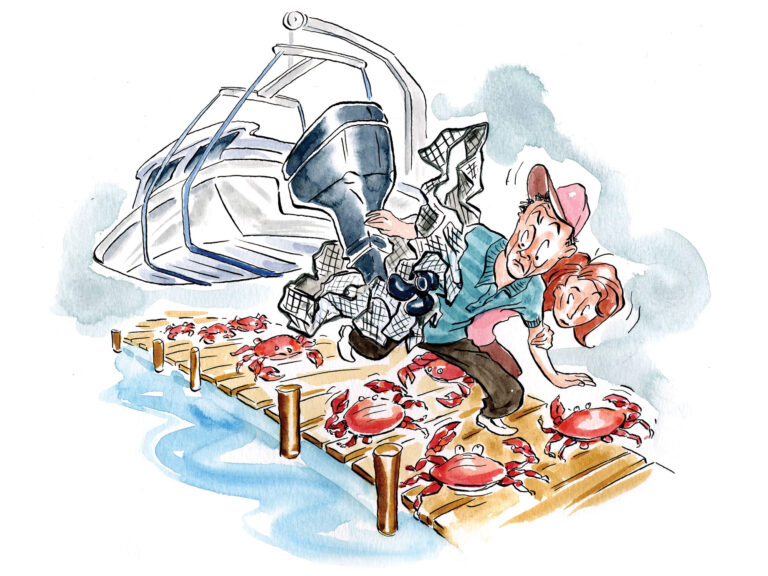Almost immediately after taking on 90 gallons of gasoline, a 35′ Chris-Craft exploded. The operator was thrown clear across the fuel dock, and his wife and dog were catapulted into the water. Pieces of the boat flew 250 feet. The resulting fire burned the boat down to the chines. Luckily, nobody was killed, but the blame for this disaster fell squarely on the owner. Why? Shoddy maintenance.
“When you go the cheapest route possible, this is what happens,” says Joel Fuoco of the Nassau County Marine Bureau in Long Island, New York, the investigator on the case. Fuoco listed three things he alleges the owner, a do-it-yourselfer, did wrong.
1. When he replaced the fuel fill and fittings on his boat, he used galvanized pipe from a hardware store and didn’t double clamp it. Dissimilar metals were touching, causing corrosion on both the fill and the tank.
2. The owner replaced the fill but not the hose. The fuel hose had wear, so fumes penetrated it and filtered into the bilge. Only one of his four blowers worked, so when he flipped them on, the fumes weren’t evacuated.
3. The worst offense: Installing an automotive starter motor. Unlike marine starters, automotive starters are not spark protected-there are no seals to protect the inner workings from collecting gas fumes. In this case, the fumes seeped right into the casing. When he tried to start up after fueling, the spark from his ignition lit the fumes in the ignition casing and-boom!-a 35′ boat was reduced to rubble.
The funny thing is, prior to the explosion, the boat didn’t appear to be a junkyard dog. The hull was in prime condition, with high-quality fit and finish. By all accounts, it was a beautiful vessel. The owner spent a lot of money making it look nice but, when it came to the boat’s vital mechanical systems….
It’s amazing that people will spend tens-if not hundreds-of thousands of dollars on a boat and then nickel-and-dime the maintenance. Because a boat’s systems are often exposed to harsh elements, the more you boat, the more maintenance it needs. That’s why it’s so tempting to find some inexpensive parts to fill in the gaps. But when you’re dealing with mechanical and electrical systems, get the good stuff. When replacing wiring, use high-grade tinned-copper wire. For diesel engines, use high-pressure braided hoses; for gas engines, use A1 rubber hoses. Double clamp everything with stainless-steel clamps. Use stainless-steel or chromed-bronze fittings. (Some of the new plastic fittings work just as well, too.) And above all else, stay out of the auto parts store.

